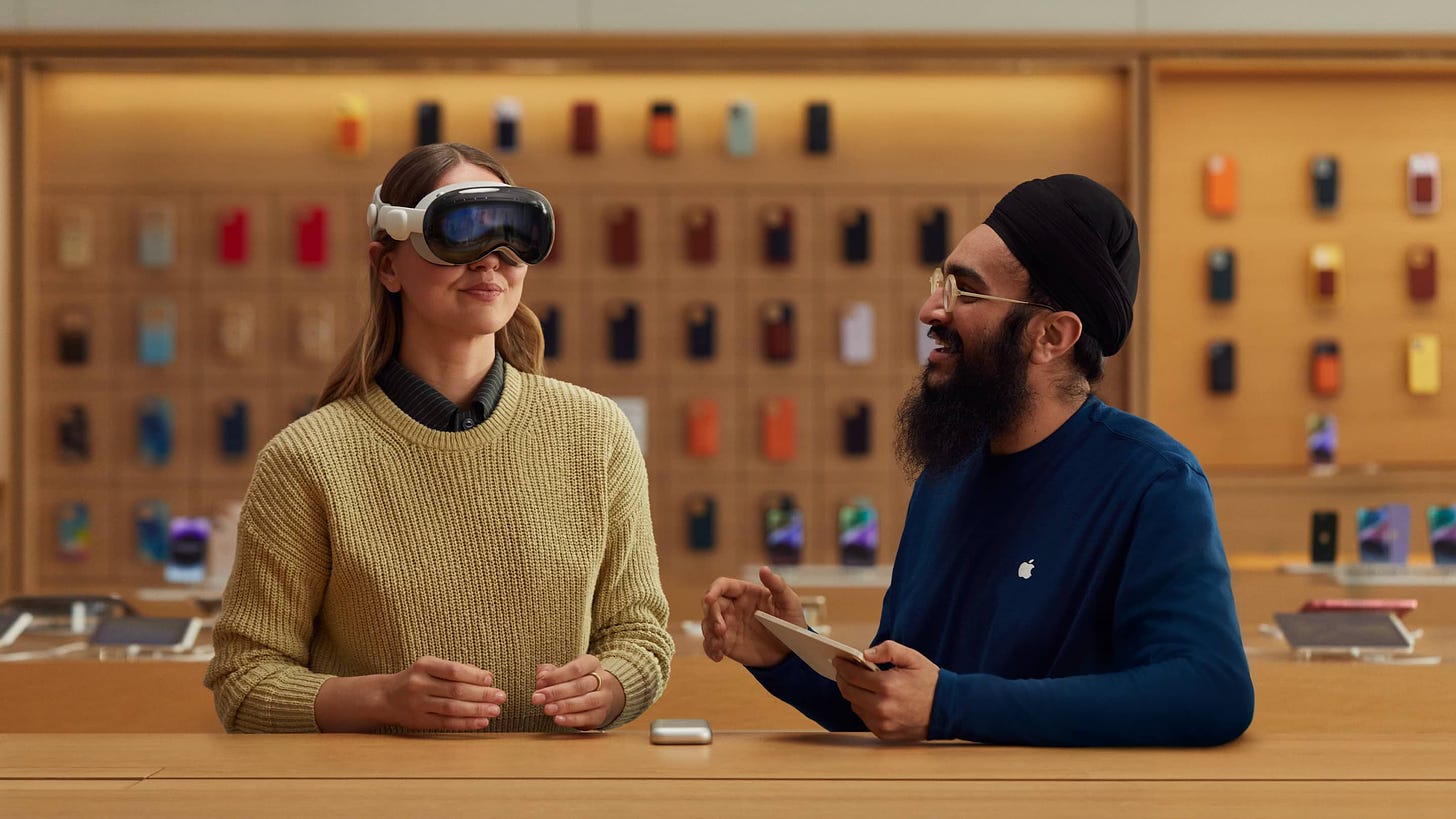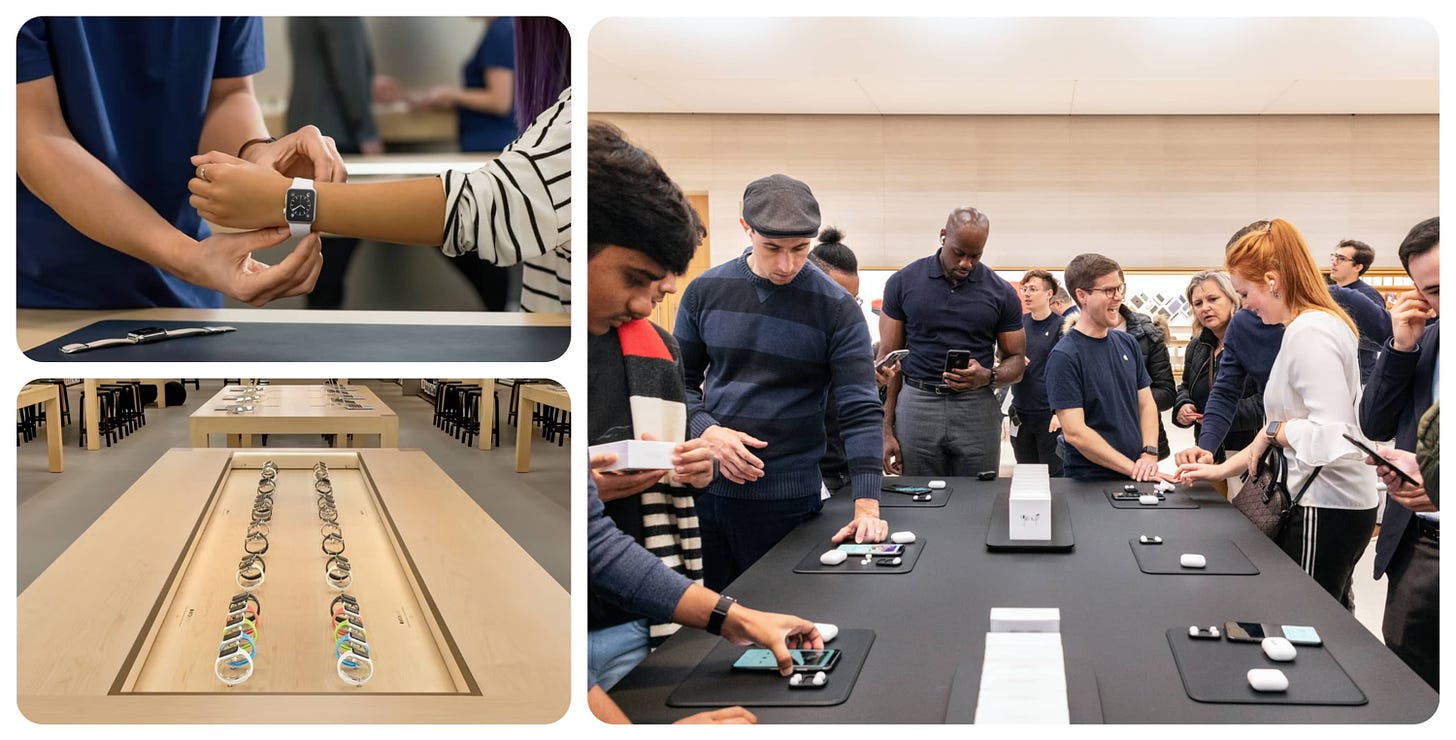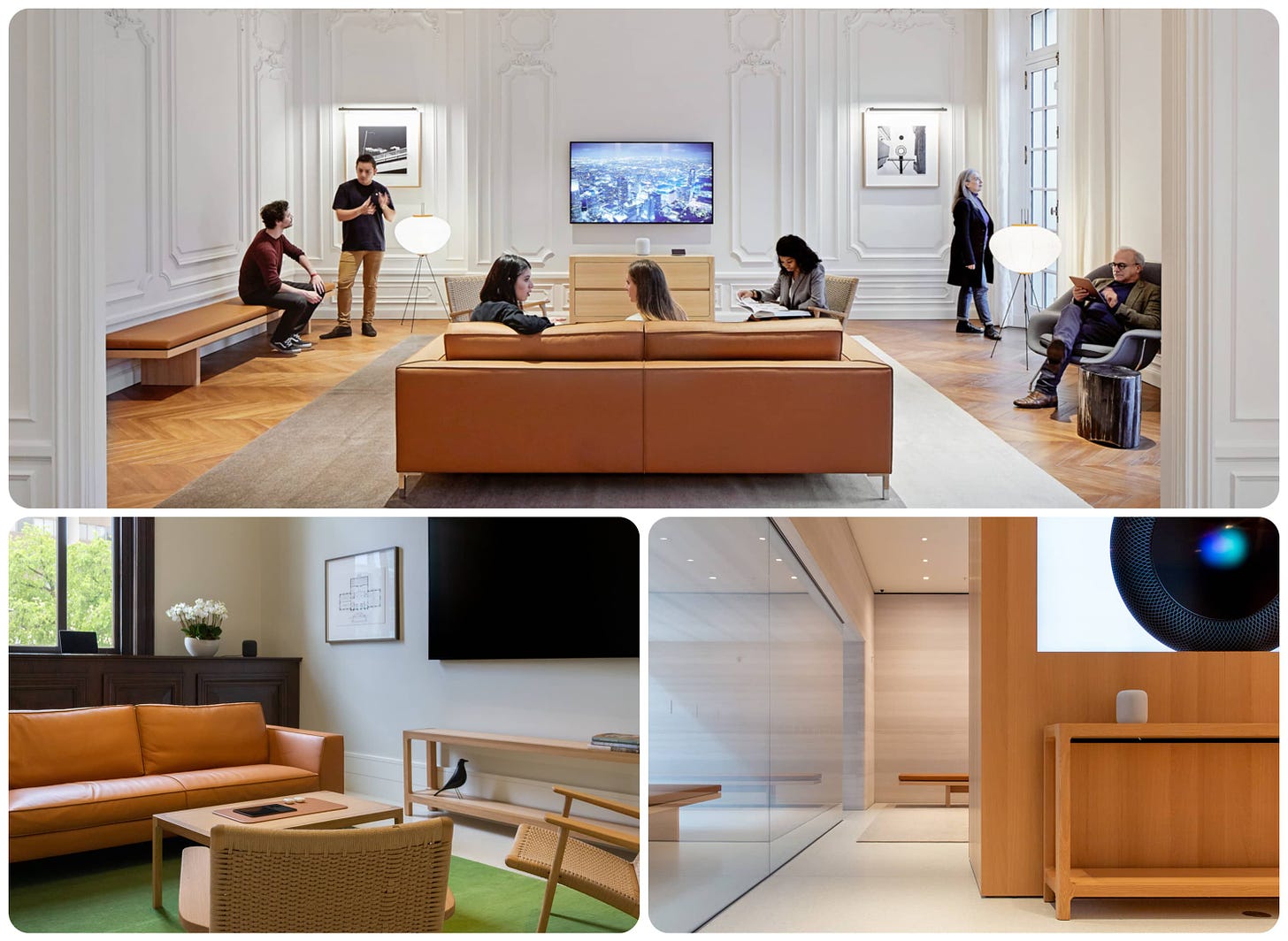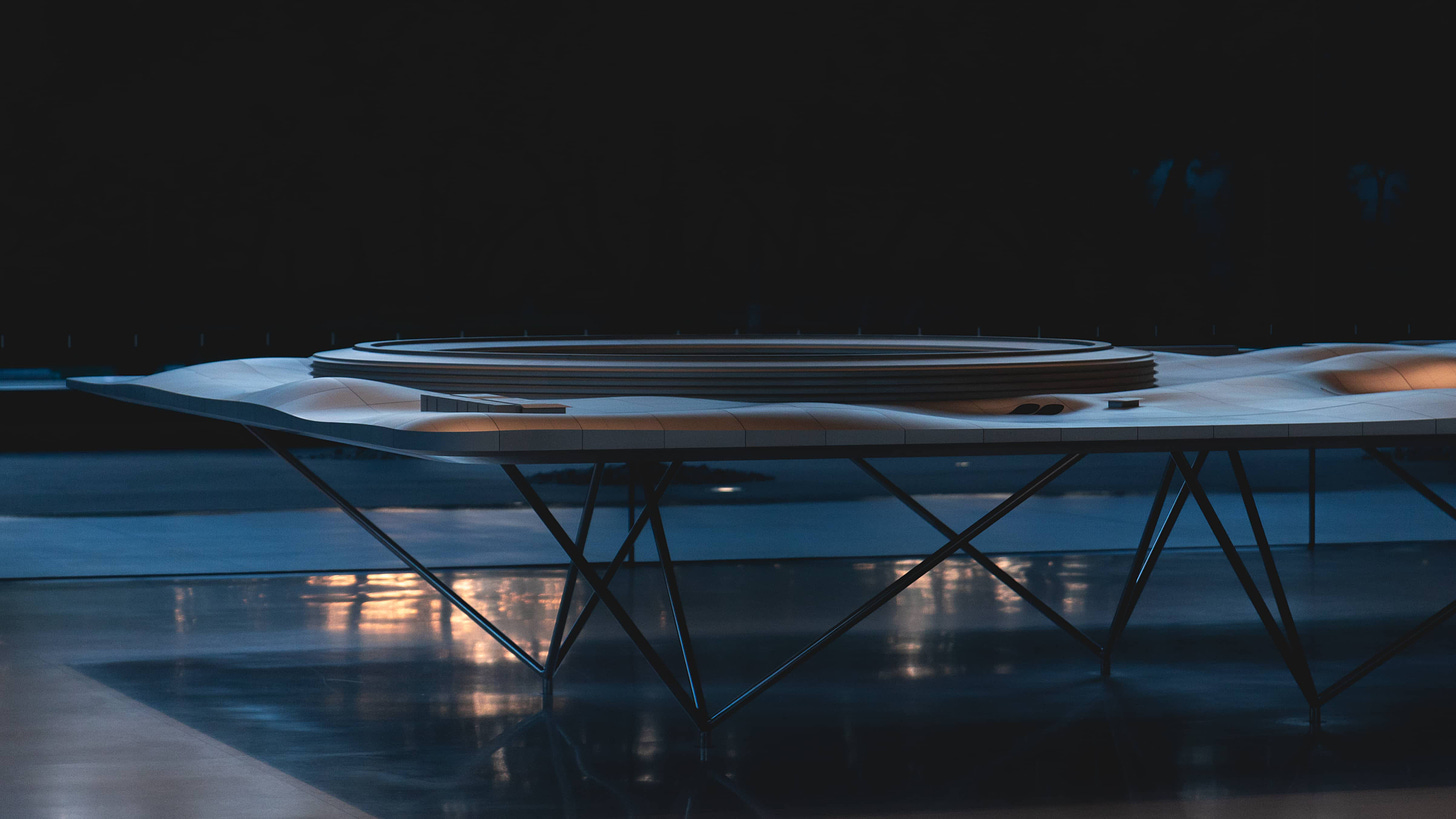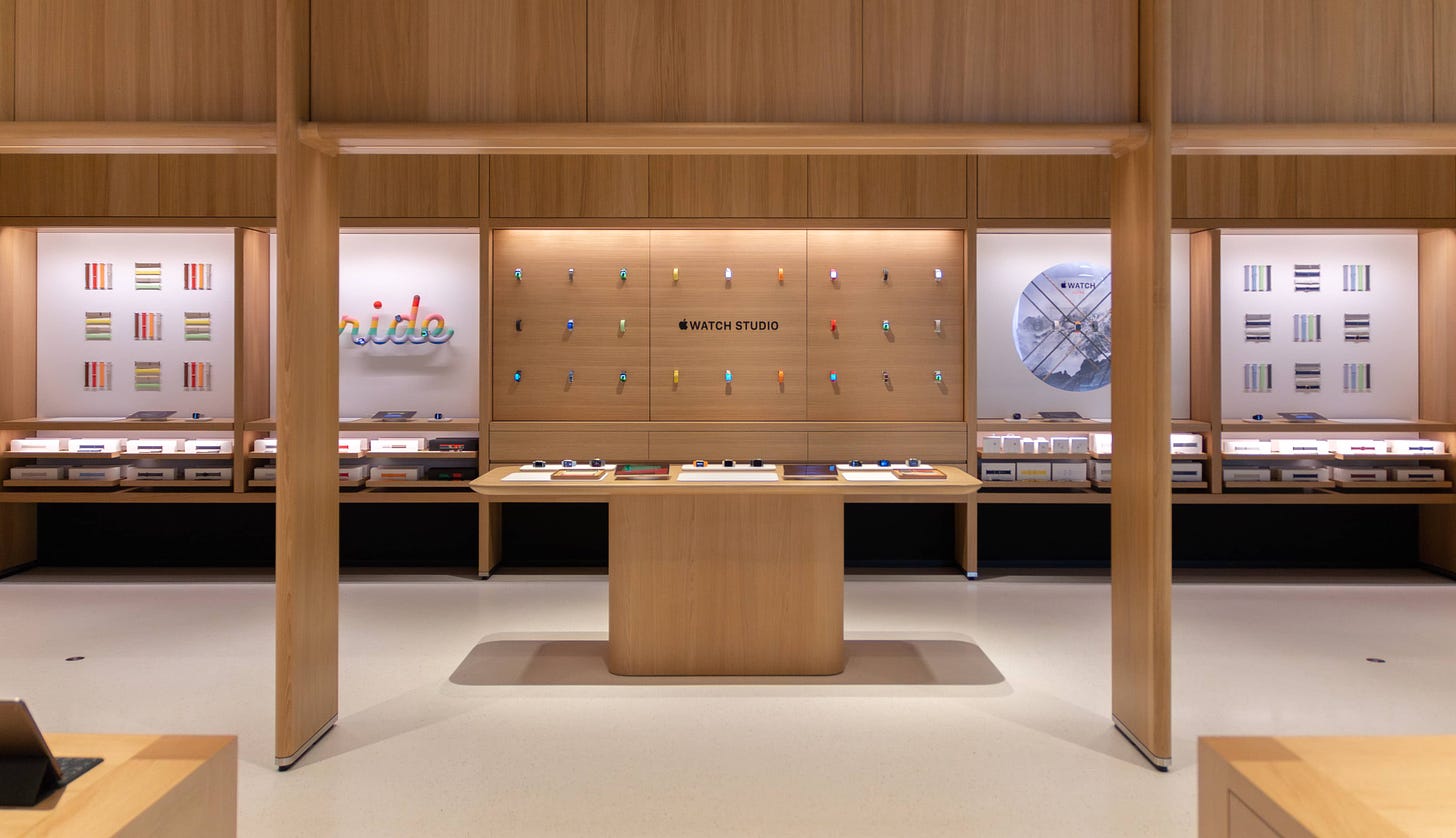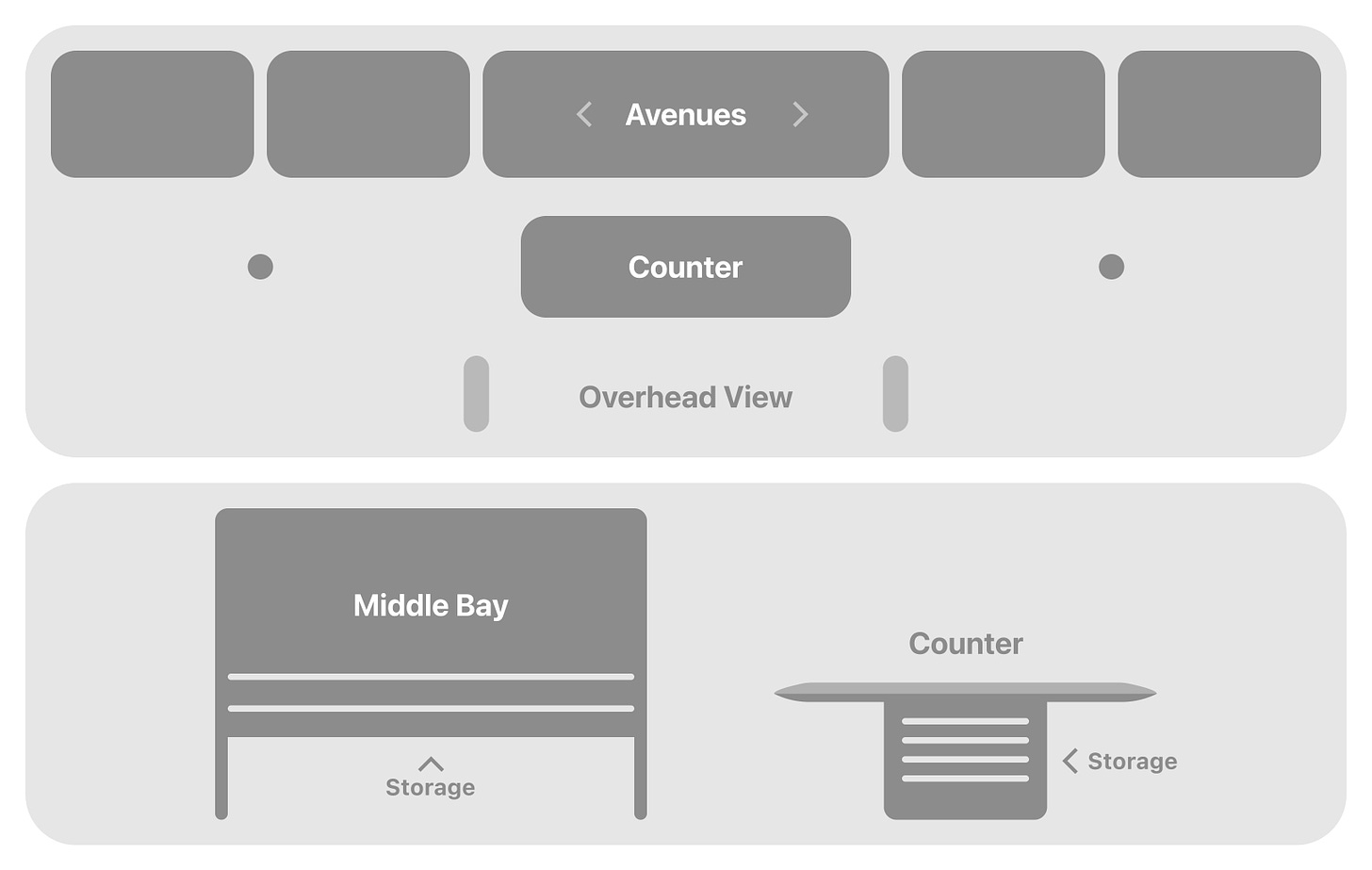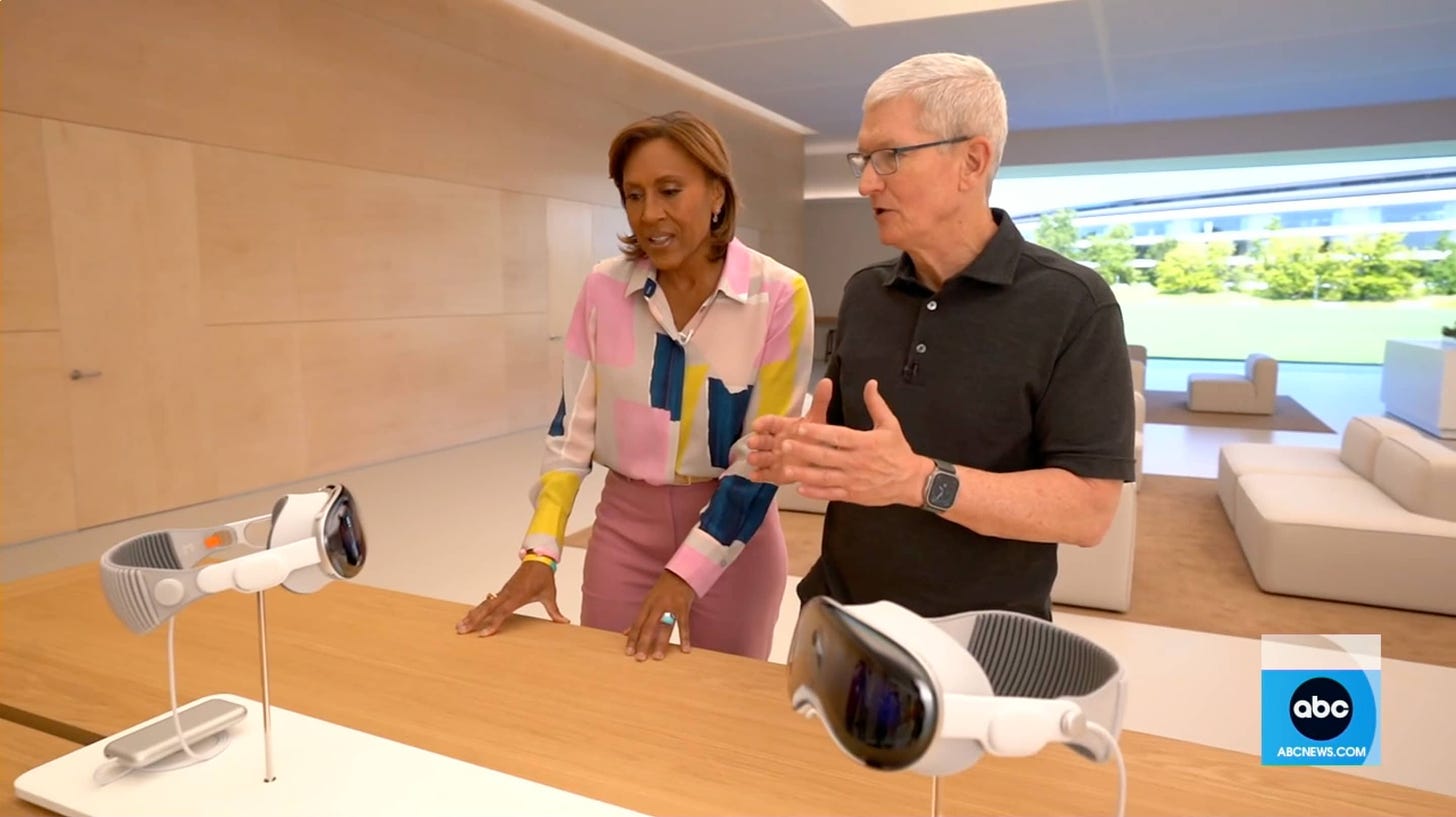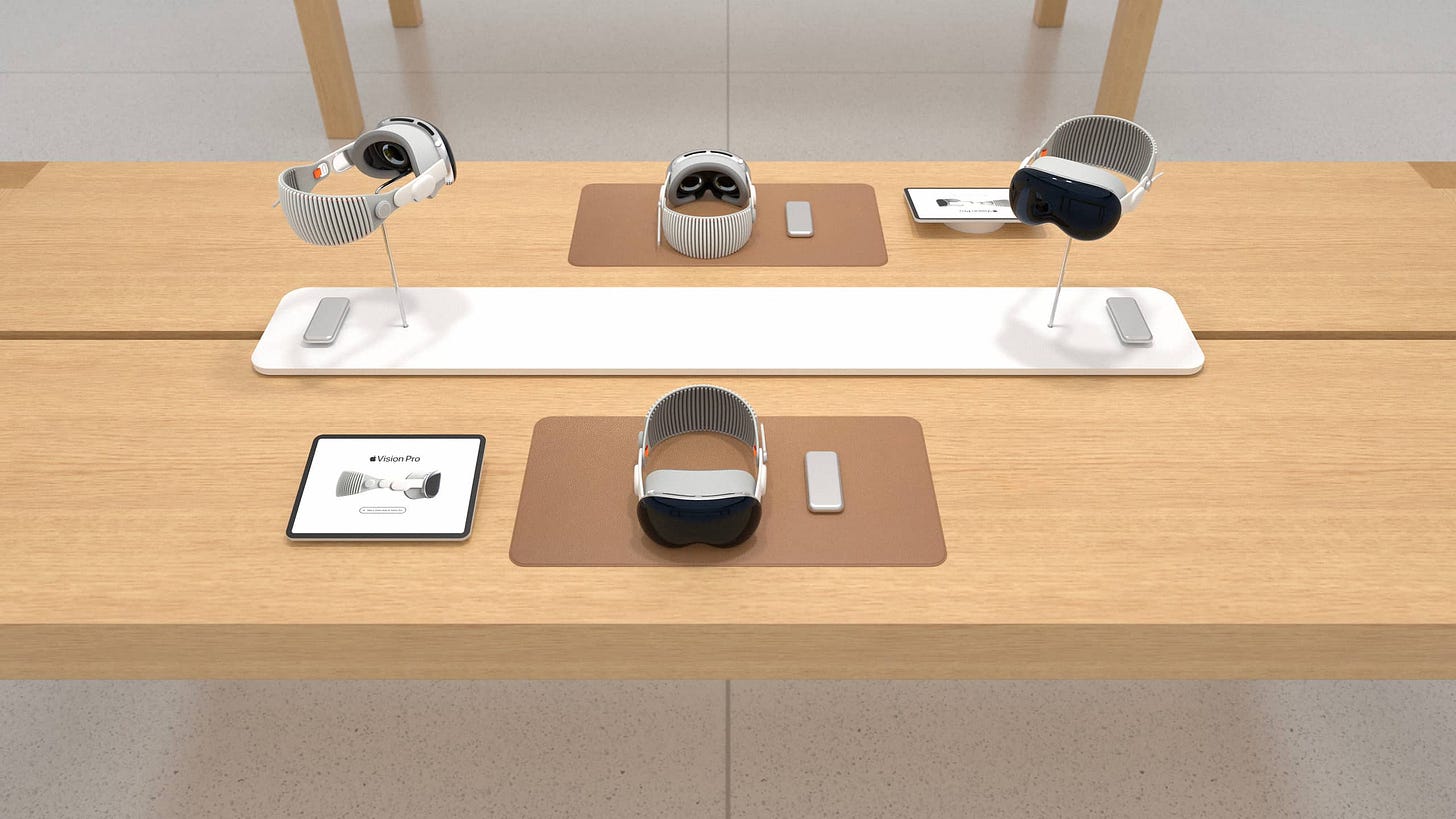

Experience Room - by Michael Steeber - Tabletops
source link: https://michaelsteeber.substack.com/p/experience-room-apple-vision-pro
Go to the source link to view the article. You can view the picture content, updated content and better typesetting reading experience. If the link is broken, please click the button below to view the snapshot at that time.

Experience Room
How will Apple Stores present Apple Vision Pro?
Apple Retail has played a critical role in shaping the customer perception of many of Apple’s most important new products. Now, Apple Stores will rise to their greatest responsibility since the launch of the first iPhone: presenting Apple Vision Pro to the world.
Today, we’ll take a detailed look at Apple’s record of immersive retail experiences, study the physical spaces Apple has already created for product discovery, and think through how Vision Pro could appear in Apple Stores.
Preparing in-depth posts like this one takes a significant amount of time and energy. Paid subscribers are the single thread suspending Tabletops and all of my Apple Store-related projects. If you like this work, please consider a paid subscription.
Prior works
Apple has elevated the launch day retail experience for two of its most transformative products in recent memory: Apple Watch and AirPods Pro. Both products introduced customers to fundamentally new ways of interacting with technology.
With Apple Watch, Apple faced three important questions: What does it look like on my wrist? How does it feel to wear? How will it help me connect with others? To answer these questions, Apple developed new display fixtures, try-on environments, and online sizing tools that guided customers before they visited a store. Retail team members were trained to offer personalized try-on sessions and private consultations for Apple Watch Edition. The in-store preview of Apple Watch was a subject of fascination and scrutiny by the Apple community, technology industry, and mainstream media outlets.
Apple also built three pop-up Apple Watch shops in London, Paris, and Tokyo in an effort to position Watch as a fashion accessory. These pop-up shops legitimized Apple Watch as more than just another gadget for early adopters to try.
The day one Apple Watch try-on experience was guided by Apple Specialists from end to end. Display watches ran simple animated video loops and interaction with the software was initially mediated through iPad mini kiosks that explained every feature of watchOS. Cases and band styles were arranged below the glass at the Apple Watch display table.
With AirPods Pro, Apple faced new questions: What do they sound like? How well do they fit in my ears? How do Active Noise Cancellation and Transparency modes work? Presenting this product was a fundamentally different challenge. Customers were already familiar with the general appearance of AirPods and their ubiquity in public spaces. Apple needed to convey a deep sensory experience within the constraints of a busy store environment.
To meet the challenge, Apple added custom black try-on tables to about a dozen of its most significant stores globally. The tables were staffed by dedicated Specialists and merchandised with iPhones and ear tips to help customers find a good fit. Critically, most of these tables were placed in the Forum, isolating the try-on experience from the rest of the busy store.
For Vision Pro, Apple needs to both familiarize customers with the fit and finish of the device as it did with Apple Watch and convey a totally new sensory experience as it did with AirPods Pro. Additionally, Specialists will need to introduce customers to the concept of spatial computing.
Prior rooms
In 2018 and 2019, Apple trialed what it called “Experience Room” at three of its most significant new stores: Apple Champs-Elysées, Apple Carnegie Library, and Apple Fifth Avenue. These rooms are physically separated from the main store and seek to provide a more relaxed and personalized place to try products like AirPods, HomePod, and Apple TV.
The Experience Rooms in Paris and D.C. are furnished much like an Apple Store Boardroom. There’s a large leather sofa, lounge chairs, credenzas, and a wall-mounted TV. The environment approximates a luxurious living room. The Experience Room in New York City is a bit different. There’s one long leather bench on each end of the room and a floor-to-ceiling console in the center with TVs and HomePods on opposite sides.
It was never clear to me what Apple’s goals for the Experience Room were, and the pandemic seriously disrupted their use. There hasn’t been another built since 2019. These elegant spaces seemed to anticipate a moment that never came.
Before Experience Room, Apple built Exhibition, a one-of-a-kind augmented reality environment at Apple Park Visitor Center. Exhibition allows visitors to explore Apple Park through iPads running an Unreal Engine-powered interactive AR experience. At the heart of Exhibition is a massive aluminum sculpture of Apple Park that functions as an AR tracking anchor. This visualization has been wildly popular with visitors for the past six years not only because it’s the closest most people will ever get to Apple Park, but because it’s one of the coolest real life AR demos.
The visionOS interface appears to be modeled around windows, three-dimensional volumes, and full virtual spaces — not tracking anchors. If Exhibition is reimagined for Apple Vision Pro, it’s hard to imagine the Apple Park sculpture remaining at the center of the experience, as beautiful as it is. Perhaps Apple planned ahead for this all those years ago, intentionally placing the sculpture in one corner of the room and leaving the rest of the space an empty canvas.
The new Experience Room
When Apple unveiled its redesigned retail experience last month at Apple Tysons Corner, all eyes were on a new space to the left of the store entrance currently featuring Apple Watch Studio. Officially, this area is a deeper extension of the Avenues that allows for a more personalized experience. Apple notes that the products and fixtures in this area could change over time. Unofficially, I’m referring to this as the new Experience Room. There are multiple factors that suggest to me Apple originally planned to call it the same.
The new Experience Room has three key parts. The first is a set of Avenue bays along the back wall. Right now, the center bay includes a set of locked drawers with ample storage and the ability to charge devices. Most of the other panels and displays along the Avenue are swappable. The second component is a large counter in the center of the room. Like the Avenue, there’s plenty of secure storage below. To the left and right of the counter are receptacles built in to the floor which suggest Apple could configure the room with up to three tables.
The third and most important part of the new Experience Room is that it enables context switching. When you pass from the main store area through the threshold, you are physically moving just a few feet. But the intimacy of the space and the visual definition between the rooms moves your mind much further. There aren’t people shuffling past you through the aisles. There’s no distraction from a customer two tables away. You feel safe. I think this environment is extremely important for customers when putting on a headset, which obstructs your vision by design.
You use AirPods, iPhone, and Apple Watch in public environments, but Vision Pro might never leave your home. That makes the Apple Store a somewhat unnatural place to use the headset and amplifies the challenge of the try-on experience. A relaxed atmosphere is key to a compelling demo.
The new Experience Room is perplexing because it’s so clearly Apple’s idea of a next-generation retail environment, yet it feels like a vision almost impossibly distant. The current pace of Apple Store remodels is just too slow for these innovations to appear at more than a handful of stores before Vision Pro launches.
The demo
Given what we know today, how might Apple Stores present Vision Pro?
I haven’t had an opportunity to try the headset, but those who have say photos weren’t allowed inside the temporary building Apple constructed at Apple Park. The only exception to the rule was ABC News, who brings us the image below.
Here, Robin Roberts is standing at what appears to be an Apple Store table fit with a riser displaying one headset on each end. For the actual try-on experience, media members were seated in a lounge area not dissimilar from the classic Experience Rooms at Apple Champs-Elysées and Carnegie Library.
From the ABC footage, I created this basic rendering of how an Apple Store table could be merchandised:
I’m not convinced Apple will ultimately use a launch day solution like this because:
Customers will try (and succeed?) to pry Vision Pro off these pedestals, as they do with the Apple Watch risers.
Putting a single riser like this in all 272 US Apple Stores would instantly lock up approximately $2 million of sellable product, and I expect Vision Pro will be extremely supply constrained at launch.
Apple Watch risers illustrate the breadth of bands, case styles, and watch faces available. This riser is mostly ornamental.
Based on the hands-on articles I’ve read, getting fitted for Vision Pro requires the following steps:
If you wear glasses, a Specialist measures your lenses to choose the correct ZEISS Optical Inserts for your headset.
Using an iPhone, you scan your face and ear to identify the best Light Seal and Spatial Audio settings.
You adjust the Head Band and run through brief onboarding to calibrate the eye tracking.
In the context of a busy store, this process is a bit time consuming and requires many tools and accessories. I’m not sure Apple Store try-on table drawers are capacious enough to house a range of Light Seals, Head Bands, battery packs, and the tools needed to measure glasses.
Perhaps this is a key moment for the new low tables and stools introduced at Tysons Corner, which Apple says are suited for longer interactions. According to Nilay Patel on The Vergecast, Apple has the ability to view your headset display on a remote iPad. It’s easy to imagine being seated side by side with an Apple Specialist as they guide you through the experience, just like in the image at the top of this post. Apple has also developed an under-table credenza fixture used sporadically at a few stores for Apple Pickup storage and special events like the recent Ted Lasso merch drop at Apple Park Visitor Center.
The classic Experience Rooms and reimagined space at Tysons Corner are perfect areas for try-on sessions that match the comfort of Apple’s own media demos. There are a few dozen other US locations with Boardrooms or Briefing Rooms that could accommodate one-on-one appointments similar to the launch of Apple Watch Edition. But the vast majority of Apple Stores will need to make the best of their existing spaces.
At some stores that could mean temporarily taking over Forums again, like at the introduction of AirPods Pro, but practically it probably means a reshuffling of the tables. Many older Apple Stores have six product tables, and the smallest just three — hardly enough to spare even one for a totally new product category. An ideal Vision Pro demo environment probably requires at least two dedicated tables: one to browse the hardware with an accompanying iPad explainer, and one for try-on appointments.
Apple may find it difficult to justify devoting an appreciable portion of the store to a product prohibitively expensive to many customers. When the 2019 Mac Pro launched, locations with lower sales volumes offered no demo at all. But unlike the Mac Pro, every customer will want to see Vision Pro, no matter if they intend to purchase or not.
Ultimately, the onus of ushering in the era of spatial computing will be on the Specialists and Creatives. The Vision Pro retail experience must be guided from end to end. Apple Stores started as a place to educate, and as technology faded to the background, customers began to intuitively understand their tools and seek out the Apple Store as a product destination. But visionOS is a fundamentally new paradigm that thrusts the role of education front and center once again.
These are just some of the many new challenges and opportunities Vision Pro will bring to Apple Stores. The dawn of spatial computing transforms far more than just the way we interact with software. This new category of device will impel Apple to reshape the retail experience around a more immersive, personalized environment. It’s an incredibly exciting moment.
Featured image
Apple Vision Pro Field House at Apple Park
Photo via Brian Tong.
Recommend
About Joyk
Aggregate valuable and interesting links.
Joyk means Joy of geeK
